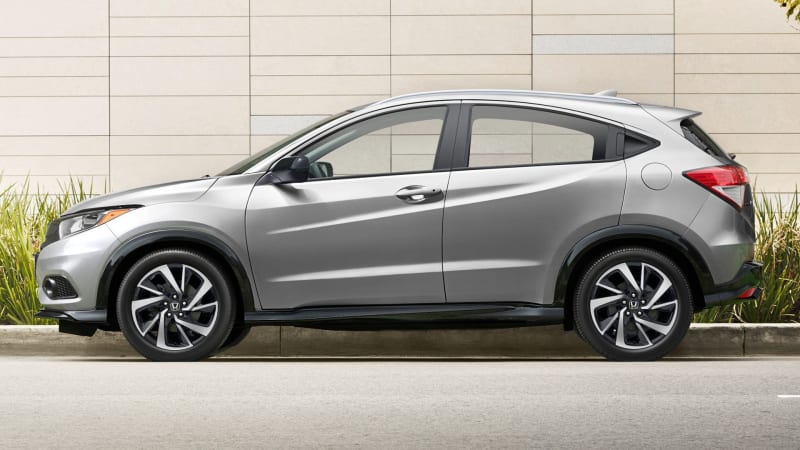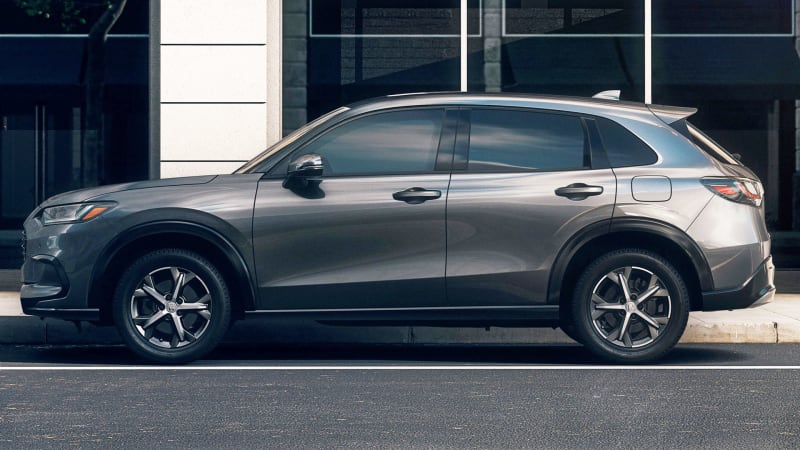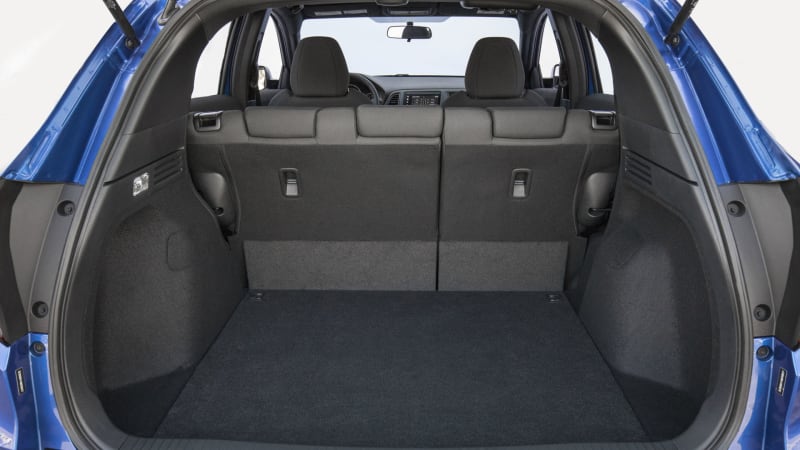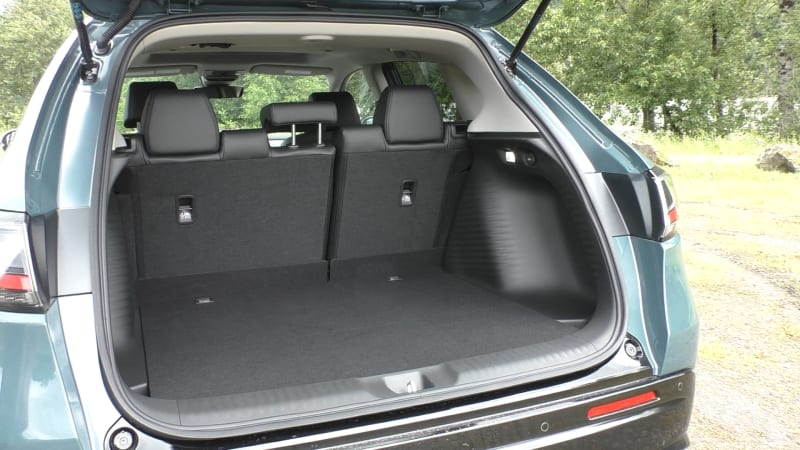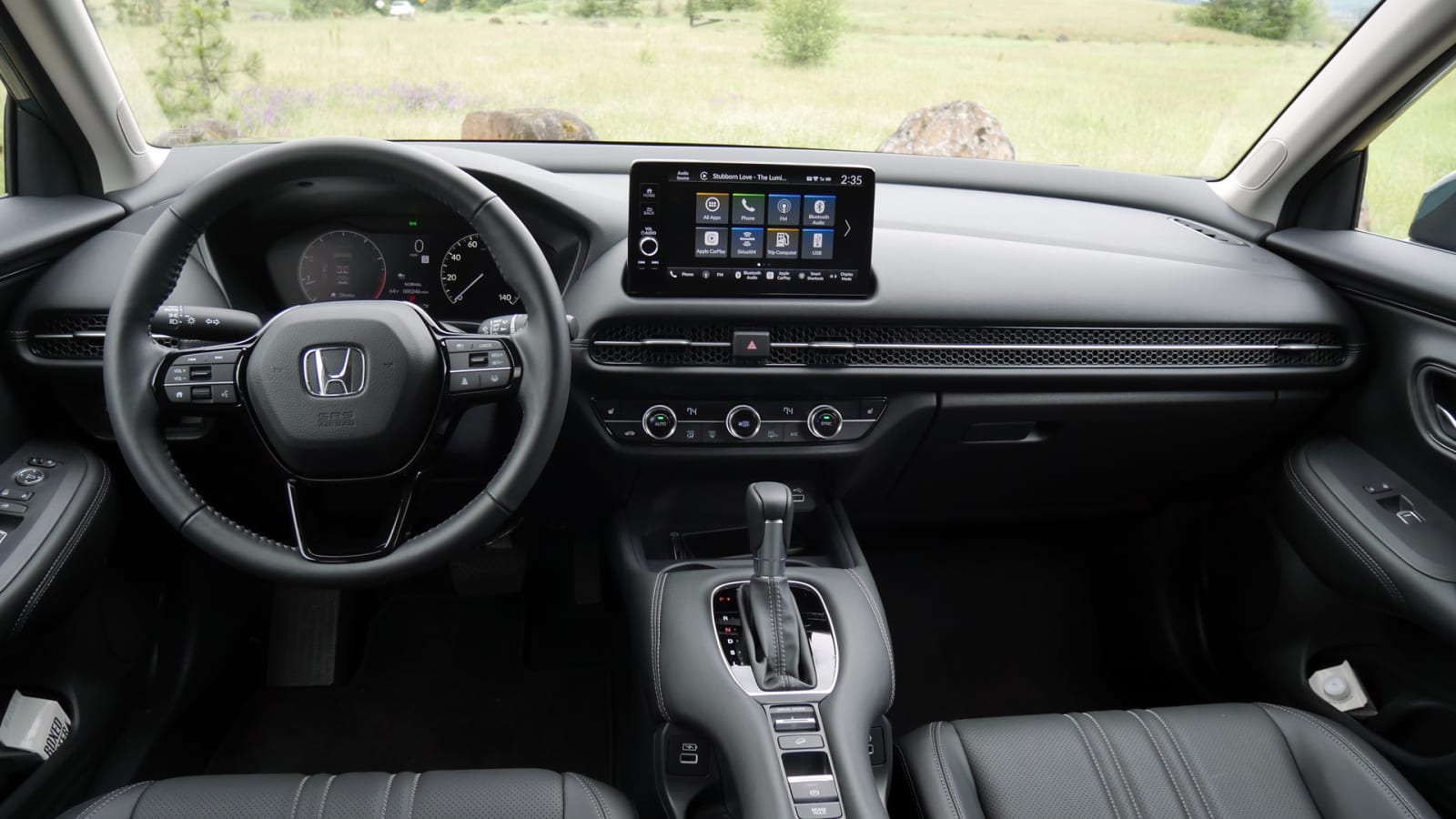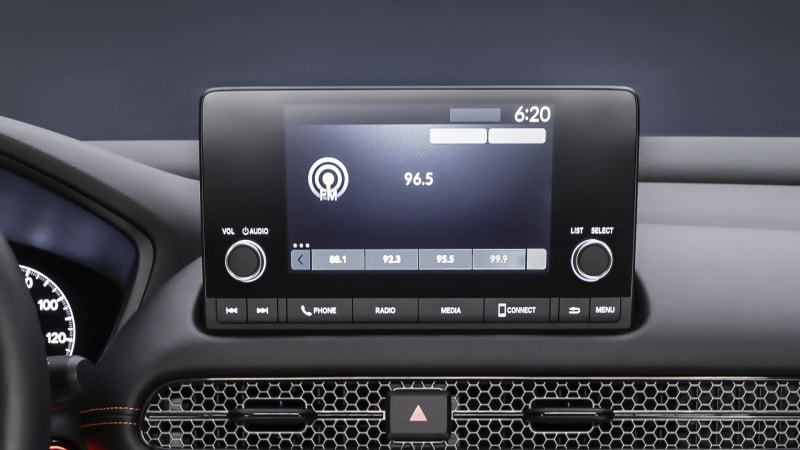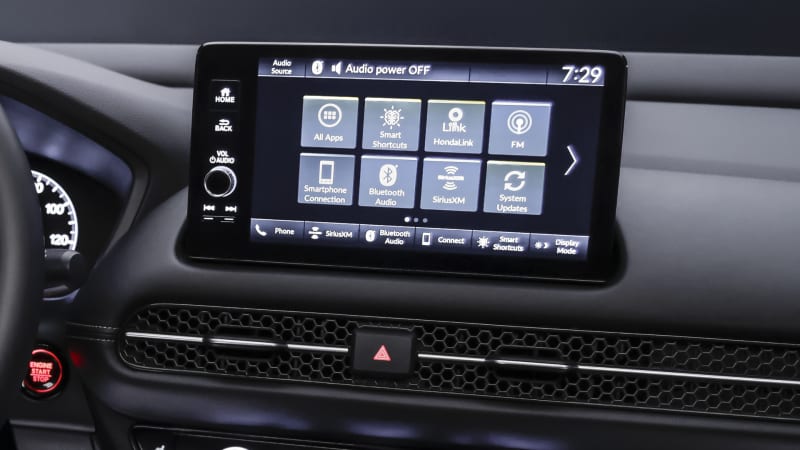2023 Honda HR-V First Drive Review: Competitively contradictory
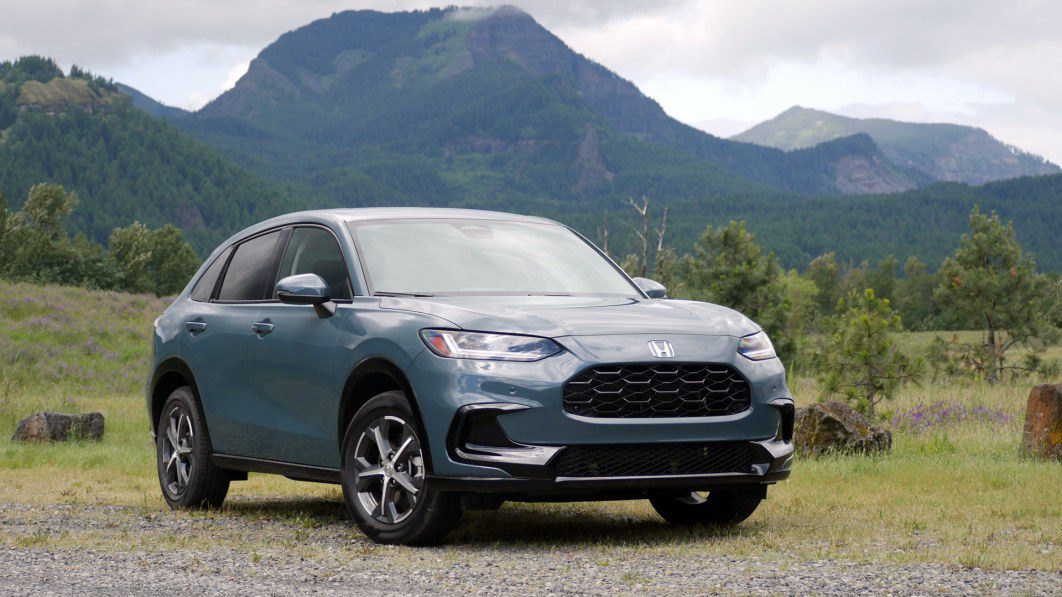
STEVENSON, Wash. — When the Honda HR-V arrived on the scene, you only needed one hand to count its subcompact SUV competitors. In fact, it helped establish the idea of the subcompact SUV in the first place. Since then, the number of competitors has swelled so much that it spawned a new subset of “midcompact” choices sized in between subcompacts like the HR-V and compacts like the CR-V. These include the Kia Seltos, Mazda CX-30, Volkswagen Taos and now the second-generation 2023 Honda HR-V.
Its length swells from 170.4 to 179.8 inches. That’s enough to eclipse all those midcompacts while still staying clear of the CR-V and other compacts. It’s also a considerable 2.6 inches wider. These aren’t incremental gains – they’re indicative of a vehicle moving up a class. When you look at the first and second generations together in profile, it’s obvious how much of a change has occurred.
When you look at the interior dimensions, however, things get weird. That’s because the vehicle it replaces was weird. The previous-generation HR-V shared the Honda Fit’s unique packaging, which located the gas tank under the front seats, thereby lowering the rear floor. That increased cargo space and versatility, and created a tall, chair-like rear seating position. Basically, you’d have plentiful legroom even though you’d be sitting awfully close to the front seats. That’s no longer the case. The specs may say the old HR-V had more legroom than the new one (and than a RAV4, for goodness’ sake), but that’s deceptive. The new HR-V, with its longer wheelbase, has a back seat that feels larger and that offers class-competitive legroom at 37.7 inches. The seat is lower to the ground, though, meaning you have less under-thigh support.
The weirdness continues in the cargo area. The specs say the volume is effectively the same at 24.4 cubic-feet, but this time, the real-world nod goes to the old HR-V (above, left). Yes, the cargo area is wider now, but the higher floor and a more sloped roofline are likely to reduce overall usefulness. Some clever engineering, at least, allows the new HR-V’s back seat to fold flat still (an extra set of hinges moves the seat bottom forward and down into the footwell).
Basically, to wrap this up, the 2023 HR-V is a more conventional crossover SUV that may not squeeze as much interior space and versatility out of its footprint as its predecessor, but it’s actually one of the more spacious in its midcompact segment. And by no longer sharing its underpinnings with the Fit, the new HR-V is moving up in the world in other ways.
Its multi-link rear suspension is effectively borrowed from the current Honda CR-V as opposed to the more rudimentary torsion beam rear of the old HR-V/Fit. This improves the ride, settles down the back end while cornering and provides a more substantial, sophisticated driving feel. Increasing the amount of interior sound deadening makes a big difference on that front as well, putting interior noise levels on par with the current CR-V. That’s not the quietest car on the planet, however, and neither is this HR-V.
Much of the front suspension and steering is brought over from the new Honda Civic, along with numerous other elements. Key dimensions are curiously similar as well, including length, legroom and hatchback cargo space. To say that the new HR-V is “based on the Civic,” as I admittedly do in the accompanying video, is not entirely accurate. While it certainly shares components, there’s just as much of the current CR-V in there, and there’s definitely less of a similarity with the Fit than the outgoing HR-V had. Why does this matter? It probably doesn’t, but the Civic connection at least speaks to the HR-V more clearly aligning with Honda’s time-honored compact car. Much as the Mazda CX-30 is the taller, SUV-ish version of the Mazda 3, so too is the HR-V now the taller, SUV-ish version of the Civic.
That point is best illustrated inside. While the high, “floating” center console lined in soft-touch pleather is a nod to the outgoing car, the rest is in keeping with the Civic. That’s great news, because it effectively means the 2023 HR-V similarly boasts a cool-looking cabin with materials and construction that are well above average. The most obvious Civic cue is the wheel-to-door air vent plated by a metal-look honeycomb pattern. There may come a day when Honda overuses this design element but, for now, it’s exceptional.
The touchscreens above, available in 7- or 9-inch sizes, are shared with the Civic, and are exponentially better than the outgoing HR-V’s slow, convoluted and just-plain-old touchscreen. Oh, and it has a volume knob and shortcut buttons now. Three USB-A ports reside in the center console, and the range-topping EX-L trim level gets wireless charging to go with its newfound Apple CarPlay and Android Auto capability. Wired versions come standard.
Safety and driver assistance features increase in number and improve in execution. The standard adaptive cruise control and lane-keeping assist systems have been upgraded from their rather elementary predecessors, including added stop-and-go capabilities and a new camera system that also helps the forward collision warning/emergency braking system detect pedestrians and cyclists. A driver inattention warning system is also now included, while the EX-L gains extra front sonar sensors for improved low-speed braking prevention (your garage wall should appreciate that). And should the safety tech not be enough, the new HR-V gains front knee and rear side airbags.
Other key upgrades involve the front seats. First, moving the gas tank to where it usually resides (toward the rear of the vehicle) allows for a surprisingly low seating position up front with significantly greater seat adjustment. Anyone of above-average height should now fit comfortably, though the lower seating position may not deliver that “commanding” view of the road some seek. The seats themselves have also been redesigned (or more accurately, brought over from the Civic), and provide greater support throughout the body.
Another carryover from the Civic is the engine, but, unfortunately, not the one we’d prefer. The 2023 HR-V comes only with the Civic’s base 2.0-liter naturally aspirated inline-four that produces 158 horsepower and 138 pound-feet of torque. That might be up from 141 hp and 127 lb-ft of the previous generation, but that’s an awfully low bar to clear. It was slow before, and it’s slow now with a dearth of low-end grunt (max torque arrives at a lofty 4,200 rpm). Lay into the throttle and nothing really happens, which is in contrast to competitors’ punchy little turbo engines. Heck, even the base Subaru Crosstrek engine has more torque than the HR-V.
And no, the 2023 HR-V doesn’t offer the Civic’s available 1.5-liter turbocharged inline-four that produces 180 hp and 177 lb-ft. That still wouldn’t be up to the base Mazda CX-30 or Ford Bronco Sport engines, but it’d be in the ballpark, along with the Subaru Crosstrek and Kia Seltos optional upgrades. The question must be asked, then: why is that turbo engine not at least available on the HR-V?
According to senior product planner Quincy Tam, it comes down to demographics and existing customer expectations. First, the turbocharged Civic trim levels are more likely to be purchased by male buyers, whereas about 70% of buyers in the HR-V’s segment are female. Perhaps that element is related to the next bit, perhaps not. Either way, research groups indicated that existing and potential buyers were looking for “sufficient power without waste.” Cost is a concern, and they don’t want to pay for something they aren’t going to use. Tam and his team asked if research group participants wanted more power, and were surprised to find that they did not. Apparently, HR-V buyers are different from Crosstrek buyers, since Subaru researchers found the exact opposite.
One can assume, then, that potential buyers should have no issue with the standard CVT, especially since it behaves more like a conventional transmission now with simulated gear changes. There’s notably less droning. The Sport and Low transmission modes do a decent job of engine braking when going downhill, and Sport will even raise revs a bit when braking into a corner. Unfortunately, when going uphill, the Sport mode consistently drops the engine down to around 3,500 rpm whenever you lift off the throttle (as opposed to recognizing that revs should remain higher), resulting in a frustrating yo-yo effect. Paddle shifters would counter this, but no dice – they’re not available.
As such, the HR-V’s powertrain continues to be a downside. Even if buyers don’t care, the disparity remains, and although its fuel economy of 27 or 28 mpg combined (depending on drivetrain) is commendable, other more powerful entries in the segment match or surpass it. And by the way, the turbo Civic gets better fuel economy than the 2.0-liter.
Beyond the powertrain, the driving experience is impressively refined for the segment. Perhaps it’s the various CR-V bits and pieces, but it does have a more substantial, sophisticated feel. Body roll is kept in decent check and the steering is consistently weighted with commendable response. The ratio is noticeably slower than the Civic’s, though, and working through a winding mountain road required just a bit more turning angle than expected. There’s definitely a more engaging and sporty version lurking within should the research groups determine such a thing should be unleashed.
Ditto outdoor adventure capability. Ground clearance measures only 7 inches, and there are no roof rails available. If you want to mount something on the roof, you’ll need special window-mounted “feet” to secure the crossbars. Those are more complicated and difficult to use, and could just as easily be popped on a Civic. The marketing story for this car involves young owners leaving the city for weekend adventures, but it’ll require more effort to do so with the HR-V than many competitors. Perhaps there’s a TrailSport lurking within as well.
For now, though, this is the HR-V that exists. It’s a more substantial and refined SUV with improved features throughout and a lovely interior. It may not possess magic interior packaging, but it’s still one of the roomiest entries in its segment. Starting at $24,895, including destination, and topping out at $30,195 for an AWD EX-L, it’s also competitively priced, aligning closely with the Kia Seltos and Subaru Crosstrek. Basically, it’s a safe and sensible choice with few bad habits that nevertheless lacks a defining niche such as being especially outdoorsy, sporty, stylish or family-friendly. Whether that makes it well-rounded or mid-pack is probably in the eye of the beholder.
